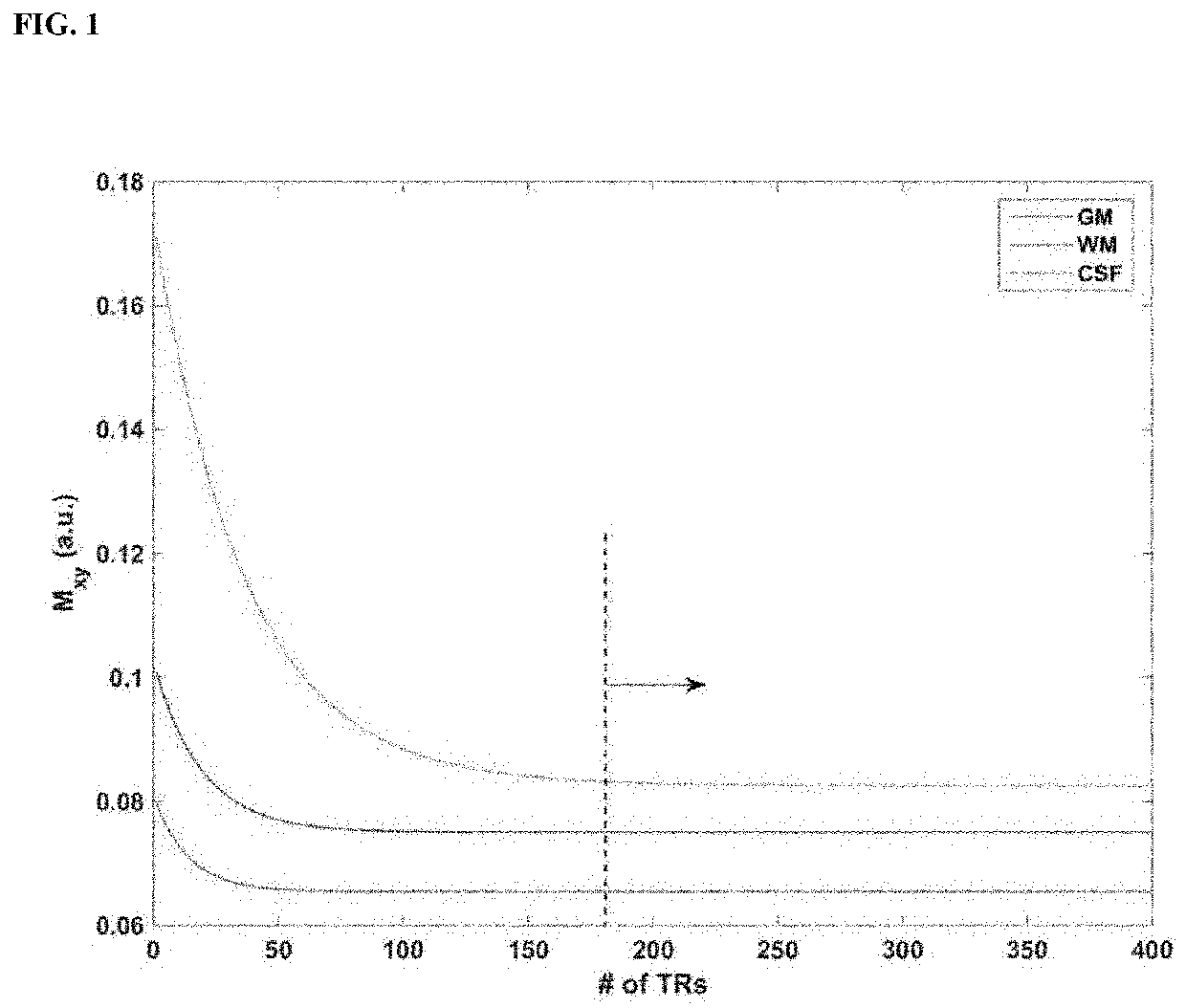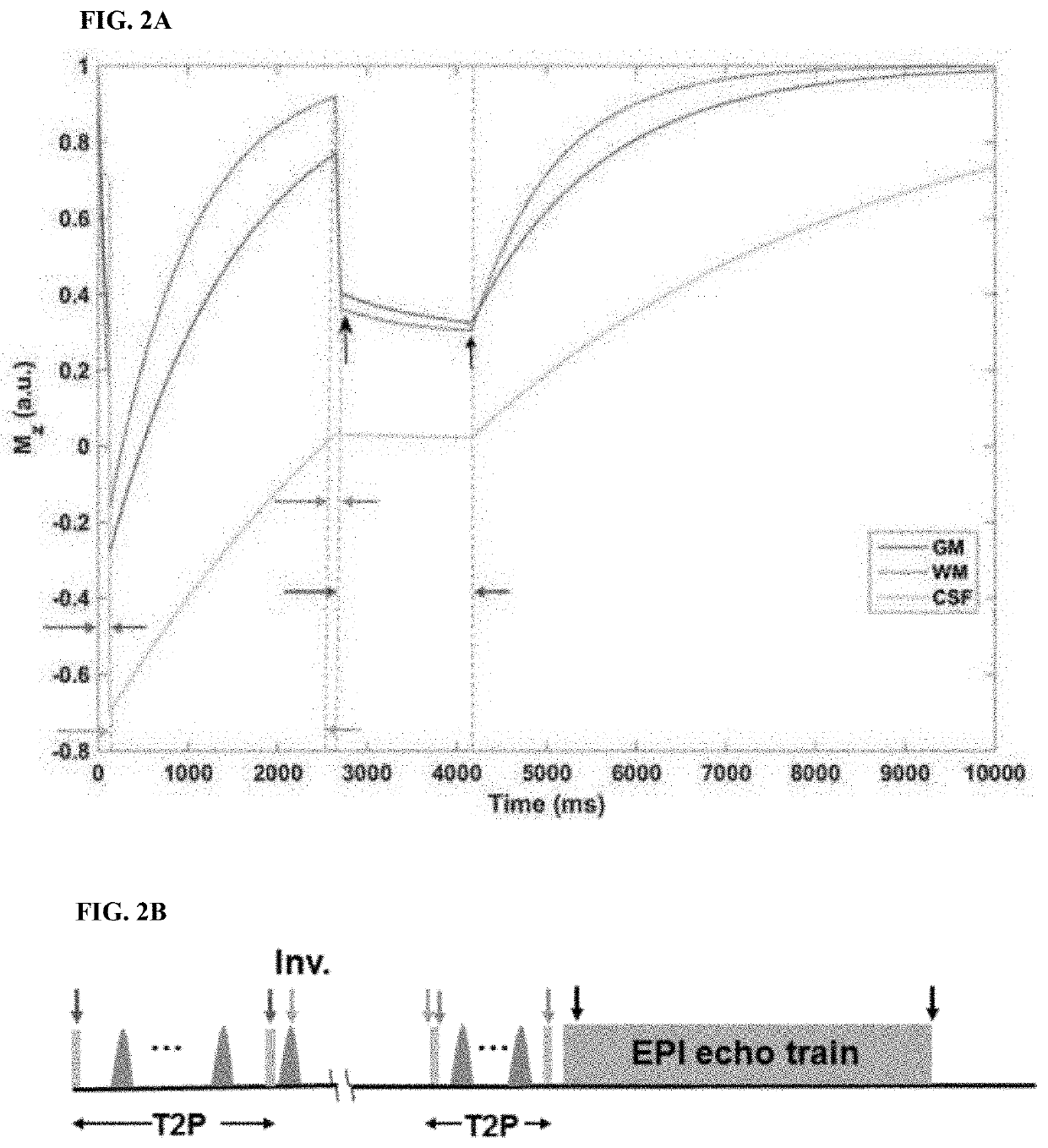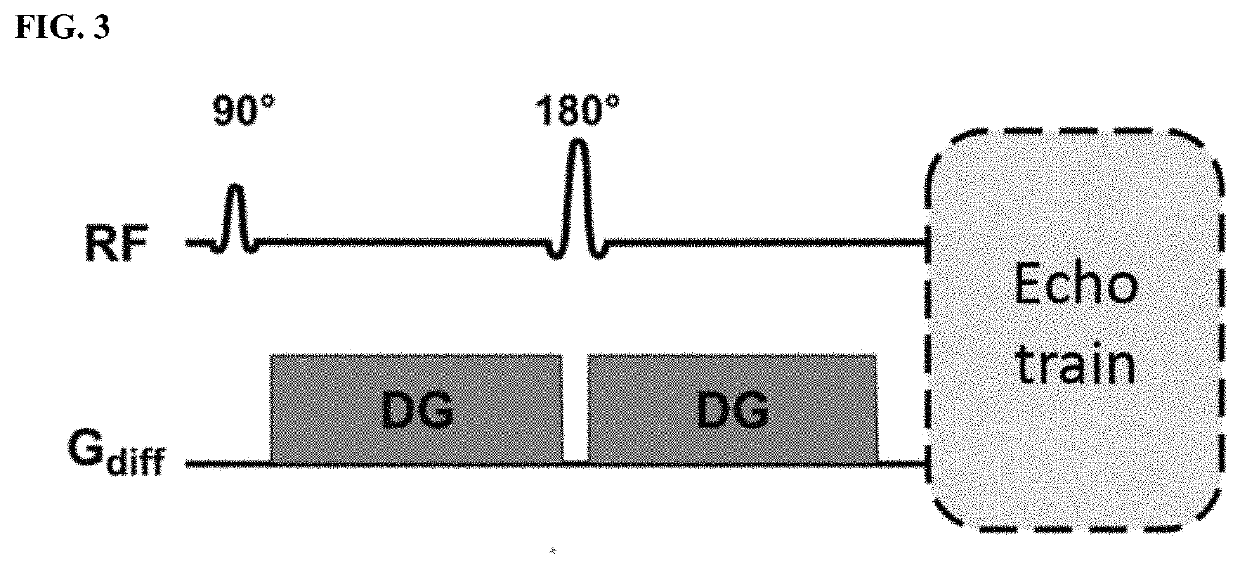High-resolution cerebrospinal fluid-suppressed t2*-weighted magnetic resonance imaging of cortical lesions
a cerebrospinal fluid and magnetic resonance imaging technology, applied in the field of high-resolution, cerebrospinal fluid suppressed t2*-weighted magnetic resonance imaging (mri) of cortical lesions, can solve the problems of obscuring the visualization of cortical lesions, difficult to detect cortical lesions in routine imaging, and difficult to visualize mri from afar, so as to achieve high isotropic resolution, suppress vascular signals, and resolution
- Summary
- Abstract
- Description
- Claims
- Application Information
AI Technical Summary
Benefits of technology
Problems solved by technology
Method used
Image
Examples
example 1
High-Resolution T2*-Weighted, Cerebrospinal Fluid-Suppressed MR Imaging of Cortical Lesions
[0049]This example demonstrates that two different approaches based on high-resolution T2*-weighted sequences that suppress CSF signals (the DWI approach and the IR-SWIET approach) are capable of detecting cortical lesions better than existing approaches.
[0050]FIGS. 1-3 show the schematics for the IR-SWIET and DWI approaches.
[0051]FIG. 4 shows that a T2*-weighted sequence that includes inversion pulse with acquisition at null point of CSF and with T2-preparations (IR-SWIET) and the DWI approach improve the visualization of cortical lesions as compared to a T2*-weighted or FLAIR sequence alone.
example 2
Inversion Recovery Susceptibility Weighted Imaging with Enhanced T2 Weighting (IR-SWIET) for Detecting Multiple Sclerosis Lesions
[0052]This example demonstrates the design and evaluation of a 3D sequence (IR-SWIET) that suppresses CSF while maintaining T2* contrast with additional T2 weighting for visualizing cortical and white matter lesions in MS. Multiple sclerosis is an inflammatory, demyelinating, and neurodegenerative disease of the central nervous system. Iron deposition visualized through T2*-weighted imaging has been thought to be a surrogate biomarker for different lesion characteristics (Haacke E M, et al., J Magn Reson Imaging 2009; 29(3):537-544). Iron concentration changes have been observed in newly forming lesions of MS patients (Zhang Y, et al., AJNR Am J Neuroradiol 2016:1629-1635), while central veins visualized by SWI or similar approaches may be a distinguishing feature of MS lesions (Sati P, et al., Nat Rev Neurol 2016:714-722).
[0053]3D interleaved echo planar ...
PUM
 Login to View More
Login to View More Abstract
Description
Claims
Application Information
 Login to View More
Login to View More - R&D
- Intellectual Property
- Life Sciences
- Materials
- Tech Scout
- Unparalleled Data Quality
- Higher Quality Content
- 60% Fewer Hallucinations
Browse by: Latest US Patents, China's latest patents, Technical Efficacy Thesaurus, Application Domain, Technology Topic, Popular Technical Reports.
© 2025 PatSnap. All rights reserved.Legal|Privacy policy|Modern Slavery Act Transparency Statement|Sitemap|About US| Contact US: help@patsnap.com



